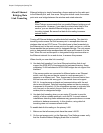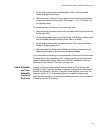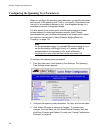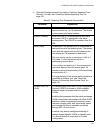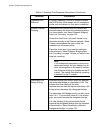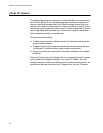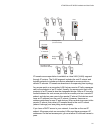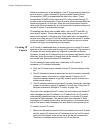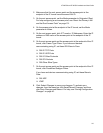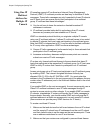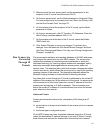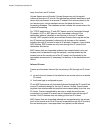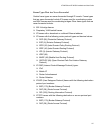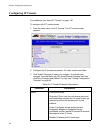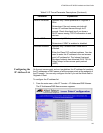Chapter 5: Configuring the Spanning Tree
142
When an access point at the endpoint of the IP tunnel receives data from
an end device, it uses a standard IP protocol called Generic Router
Encapsulation (GRE) to encapsulate the data into a frame. These
encapsulated IP/GRE frames use normal IP routing to pass through IP
routers to the root access point. The root access point unencapsulates the
frame and forwards it to the host. When the root access point receives
data on the Ethernet network for an end device that is communicating on a
remote IP subnet, it reverses this process.
IP tunneling also allows non-routable traffic, such as WTP and NNL, to
roam across routers. The end devices using these protocols are not IP
based, but they work in the same way. Data traffic that is not passed by
routers (since they are not IP) will be tunneled from the remote IP subnet
to the root subnet. It will be dumped on the Ethernet on the root subnet
(where it belongs) and everything works properly.
Creating IP
Tunnels
An IP tunnel is established when an access point on a remote IP subnet
attaches to the root access point through its IP tunnel port. The number of
IP tunnels the root access point can originate is practically unlimited.
However, currently the IP address list can only contain eight entries, which
effectively limits the number of tunnels that can be created if you want to
use unicast and directed broadcast IP addresses.
The IP address list can contain any combination of IP unicast, IP
broadcast, or IP multicast addresses:
Only one IP tunnel can be created for each IP unicast address in the
list.
One IP directed broadcast address can be used to create a practically
unlimited number of tunnels to a single remote IP subnet. (An IP
directed broadcast address is typically used to specify all hosts on a
single remote subnet.)
One IP multicast address can be used to create a practically unlimited
number of tunnels to remote IP subnets. For help, see “Using One IP
Multicast Address for Multiple IP Tunnels” on page 144.
Once you have configured the IP tunnels, the root access point sends IP
hello messages to each IP address in its IP address list. An IP tunnel is
automatically established when an access point on a remote IP subnet
receives this hello message. This access point then transmits IP hello
messages on its subnet so that other access points on the same subnet
that do not receive hello messages can also attach to the spanning tree.
To create a unicast IP tunnel
1. Make sure that end devices that will roam between the root IP subnet
and the remote IP subnet have IP addresses from the root IP subnet
and have their default router set the same as the root access point.
There are no address restrictions for non-IP end devices.



